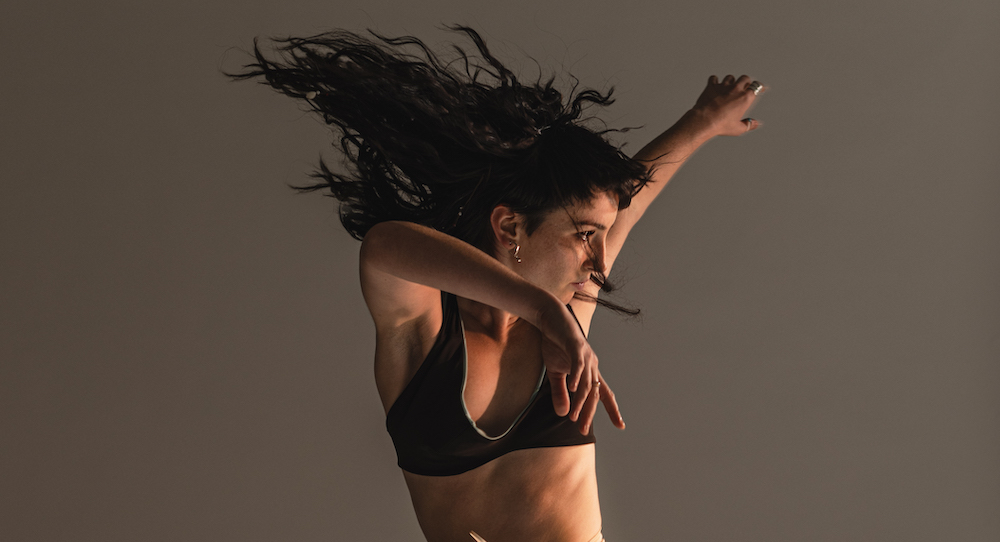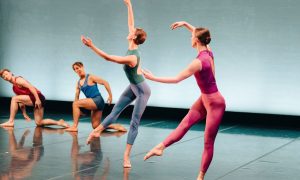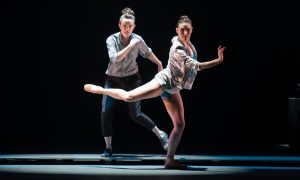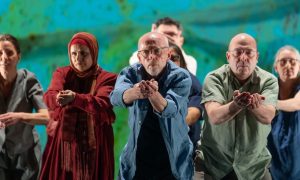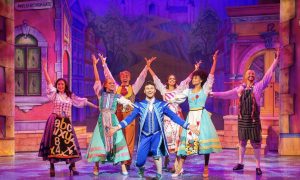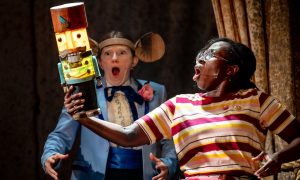Celebrating 100 years of Rambert School of Ballet and Contemporary Dance, Amanda Britton, the Chief Executive, Principal and Artistic Director, caught up with Dance Informa to review the history and evolution of the school which proudly continues to embody the innovative spirit instilled by its founder, Marie Rambert, boasting 45 graduates annually from 20 countries around the world. Britton, a Rambert alumna, highlighted the school’s historical shifts and its commitment to nurturing unique, creative artists.
With over 35 years of experience as a dancer, teacher, rehearsal director, mentor and course leader, Britton trained at the Rambert Academy and joined Ballet Rambert in 1984. She appeared in lead roles for works created by Christopher Bruce, Merce Cunningham, Richard Alston, Glen Tetley and Trisha Brown, among many others.
After retiring from performing, Britton earned an MA in Dance Education and Training at London Contemporary Dance School. She then joined Rambert School in 2005, overseeing its transition to Higher Education and managing the FD/BA(Hons) in Ballet and Contemporary Dance programs. In 2015, she became Principal and Artistic Director, introducing new postgraduate programs, including the MA Professional Dance Performance/Rambert2 and MA Dance Research for Professional Practitioners. Britton is committed to expanding dance access, enhancing learning, participation and outreach efforts. In 2020, Rambert School and Rambert (Company) jointly launched Rambert Grades, a contemporary dance syllabus for youth fostering creativity and development.

Join us as we examine the background and progression of Rambert School, and delve into its history.
Amanda, starting from the school’s founding in 1920, by Marie Rambert and through to World War II, how do you see the foundational values established in the early ‘Ballet Club’ days shaping the school over the years, including your experience and the present day?
“Purely from my perspective as somebody who trained here and danced with the company – although I’m not a dance historian – I see Marie Rambert as a maverick, a kind of disruptor. For instance, in contrast, there was Dame Ninette de Valois who at a similar time in history established The Royal Ballet, and of course, The Royal Ballet School came out of that. She was a strong business woman. She was very canny, strategic, she made the right kind of relationships, and built her company – The Royal Ballet – and we all know what that is today.
Then there was Marie Rambert who was always an innovator – the maverick. In January 1960, on the BBC programme ‘Monitor’, Rambert made her famous statement that “if The Royal Ballet was ‘the National Gallery’, then her vision was for her company to ‘be the Tate Gallery’”. She was forward thinking and had a different approach to things.
I believe we still embrace this and encourage young artists to be creative innovators and mavericks. We inspire our artists to be unique, and not a replica of one another; that is very much still at the heart of what we do. Each of our students is different and has something of their own to offer.”
It’s intriguing how those foundational values are carried through. During the postwar era of the 1950s, the school experienced a period of stability and growth. What factors attracted individuals to the school during this time?
“During this period, the school and company were connected and known for its strong technical training. The company toured the world to perform in places such as Germany, Paris, Italy and Scotland where workshops were held. There were many events that placed both the company and the school in the spotlight. For instance, the Rambert Company toured to Australia and New Zealand between 1947 and 1949, and brought international acclaim.
Brigitte Kelly wrote a book, ‘Mim’: A personal memoir of Marie Rambert, and she was quite instrumental at that time and a close friend of Angela Ellis, Marie Rambert’s daughter who ran the school for a short period of time with David Ellis (Marie’s son in law). In 1951, Ballet Workshop at the Mercury Theatre was founded, providing a platform for emerging dancers, choreographers, composers and designers to showcase innovative and experimental works. Many of these ballets eventually became integral parts of Ballet Rambert’s repertoire.
Attention continued to grow around Marie Rambert. In June 1953, Marie Rambert was awarded a CBE in the Coronation Honour, and in July 1956, she received the Queen Elizabeth II Coronation Award from the Royal Academy.
The school was still a ballet school in the late 1950s, early 1960s, when contemporary dance and modern dance started in the UK and Graham technique was embraced.”
Despite financial challenges in the 1960s, the following decades played a crucial role in cementing the school’s prominent position. What specific events and influences contributed to shaping the school’s offerings during this period?
“These were interesting times. In May 1959, Ashley Dukes, Marie Rambert’s husband, passed away. The following year, in January 1962, in the New Year Honours, Marie Rambert was made Dame Commander (DBE), Order of the British Empire, and in February she was the subject of the television programme, This Is Your Life.
Throughout this decade, the school and the company started to drift apart. The school was based at Notting Hill and the company was touring – Rambert herself spent more time with the company than with the school. Her daughter took over the school and ran it successfully for quite a number of years.
In 1979, Ellis retired, prompting Rambert School’s relocation to temporary facilities at The Place under the leadership of Brigitte Kelly. Concurrently, the newly established Rambert Academy began its operations at West London Institute of Higher Education, with Gary Sherwood as Director and Christopher Bruce as an artistic advisor.
Christopher Bruce played a key role by creating and recreating works, and I personally participated in one of them. This unique approach became my entry point into the company in 1984, and several of my peers from the school also joined the company through similar pathways. This period marked a significant and innovative new beginning for the school.
The Rambert School at The Place underwent a division — one segment integrated into what is now Central School of Ballet under Christopher Gable, while the other segment relocated to Twickenham. Marie Rambert passed away on 12 June 1982, and in September of 1983, the Rambert School of Ballet merged with Rambert Academy to form the Ballet Rambert School.
Ross McKim took over in 1985, as Principal of the Rambert School of Ballet and Contemporary Dance and continued for 30 years – so he oversaw it and focussed on quality rather than expansion.”
Fast forwarding to your tenure as Principal and Artistic Director in 2015, the introduction of the Bachelor of Arts and the Master’s Degree has left a profound impact on contemporary dancers. Could you provide a nuanced understanding of how these degrees have shaped the careers of students?
“Ross wrote the original Bachelor of Arts degree specification, and I was instrumental in turning it into what actually happened; that was my job. I came in as the Head of Academic Studies, and I put in place a critical studies curriculum. We turned what we were doing in the studio into a framework. Approximately 500 students audition for 50 places each year.
We still delivered the ballet, contemporary and creative components, as well as the student choreography. It’s wonderful to offer students this opportunity, as their first career they might be as a performer, but later on, they might want to go on and do a master’s degree, teach or move into a related field. Having such a qualification propels students forward with transferable skills building reflective, research skills and understanding of wider concepts around dance science, semantics, dance psychology, dance history and all of those things that underpin your learning in the studio. It’s been really successful.
I initiated the Masters program, and during this time, the school and the company had been drifting apart. We came back closer together because the director of the company – at that point – was Mark Baldwin, and I danced with him. So, together, we developed a concept for a postgraduate program, which would be like a junior company for Rambert.
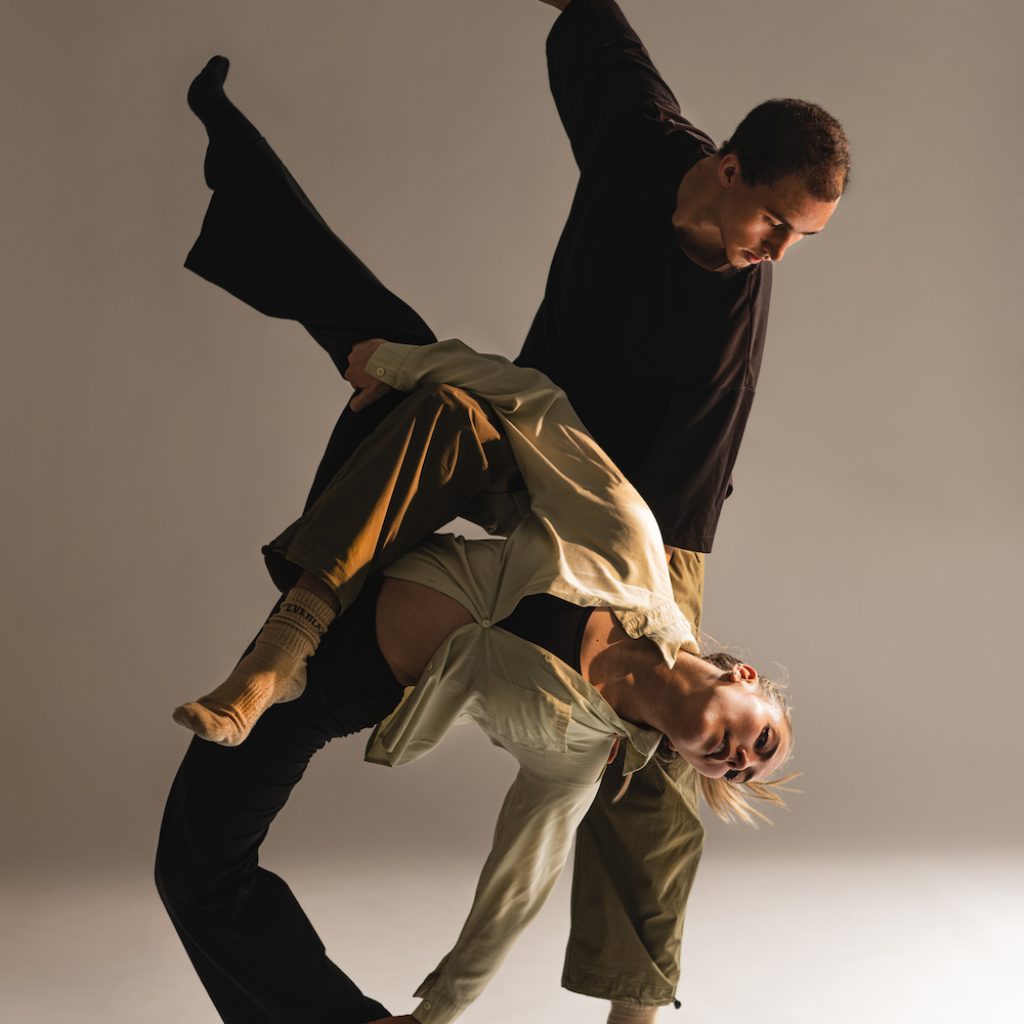
I wrote it with some consultants here, and we ran it for three years. We did have some external funding from the Linbury Trust (a UK-based grant-making foundation which is part of the wider Sainsbury Family Trust network) who have funded the school in the past as well. That funding enabled us to run the masters really successfully; however, it’s not currently running due to financial reasons. Nonetheless, for the three cohorts, we had 800 students auditioning from all over the world.
People literally flew from New Zealand to do the audition; the talent was incredible. We ended up with about 13 in each cohort, and it was a very intense experience. They worked at the company, they took class with the company dancers, and then they had their own work made on them.”
The school boasts impressive and influential alumni. Can you describe how these luminaries from the past have paved the way for aspiring artists of the future?
“Amy Hollingsworth, an award-winning dancer, director, choreographer, is now the Artistic Director of Australasian Dance Collective and was a dancer with the company. She is making a huge impact, as well as Max Day, who trained at the school from 2015-2018. The earlier names are Frederick Ashton and Christopher Bruce of course, and then Fiona Lummis went from Rambert Academy to Nederlands Dans Theater and was a muse for Jiří Kylián.”
Your insights into the academic evolution of Rambert School are invaluable. Looking ahead to 2024, particularly in the context of inclusion, diversity and the introduction of the Rambert Grades contemporary dance syllabus, could you elaborate on the envisioned trajectory of the institution?
“The focus is around inclusion, access and diversifying the graduates of the school so that the profession starts to look different. We’ve done that around the big Black Lives Matter movement. So that’s really spurred us to decolonize the curriculum.
The curriculum includes international exchange opportunities, and our guests are about inspiring and influencing graduates, as they will become dancers, creatives, choreographers and directors who influence the world to be a better place – to be more inclusive – and to value dance.
Finally, I started a contemporary dance syllabus called the Rambert Grades, and it’s growing very quickly. We now have about 500 teachers in 20 countries around the globe and it’s really about access, about giving people the chance to learn contemporary dance and improvisation and enjoy their dance journey.”
With an array of performances and milestones, you can view the history of the Rambert School on the Rambert Timeline.
By Renata Ogayar of Dance Informa.


